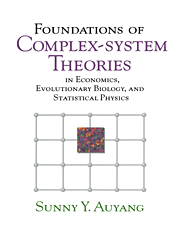Book contents
- Frontmatter
- Contents
- Preface
- 1 Introduction
- PART I EQUILIBRIUM
- 2 Theories of Composite Systems
- 3 Individuals: Constituents and Systems
- 4 Situated Individuals and the Situation
- 5 Interacting Individuals and Collective Phenomena
- 6 Composite Individuals and Emergent Characters
- PART II DYNAMICS
- Notes
- Bibliography
- Name Index
- Subject Index
5 - Interacting Individuals and Collective Phenomena
Published online by Cambridge University Press: 11 May 2010
- Frontmatter
- Contents
- Preface
- 1 Introduction
- PART I EQUILIBRIUM
- 2 Theories of Composite Systems
- 3 Individuals: Constituents and Systems
- 4 Situated Individuals and the Situation
- 5 Interacting Individuals and Collective Phenomena
- 6 Composite Individuals and Emergent Characters
- PART II DYNAMICS
- Notes
- Bibliography
- Name Index
- Subject Index
Summary
An Intermediate Layer of Structure and Individuals
There is no ambiguity about the ingredients of solids. A solid is made up of atoms, which are decomposed into ions and electrons, simple and clear. However, a chapter or two into a solid-state text book and one encounters entities such as phonons and plasmons. Not only do they have corpuscular names, they behave like particles, they are treated as particles, and their analogues in elementary particle physics are exactly Particles. What are they and where do they come from? A phonon is the concerted motion of many ions, a plasmon of many electrons. They are treated as individuals not because they resemble tiny pebbles but because they have distinctive characters and couple weakly to each other. Physicists have microanalyzed the solid afresh to define new entities that emerge from the self-organization of ions and electrons.
Salient structures describable on their own frequently emerge in large composite systems. Systemwide structures will be discussed in the following chapter. Here we examine a class of structure that is microanalyzable into novel individuals, which I call collectives. A collective arises from the coherent behavior of a group of strongly interacting constituents. It has strong internal cohesion and weak external coupling, and its characters and causal relations can be conceptualized independently of its participants. Thus it is treated as an individual. Phonons and plasmons are examples of collectives, as are firms and households, which are organized groups of people.
- Type
- Chapter
- Information
- Foundations of Complex-system TheoriesIn Economics, Evolutionary Biology, and Statistical Physics, pp. 151 - 172Publisher: Cambridge University PressPrint publication year: 1998



